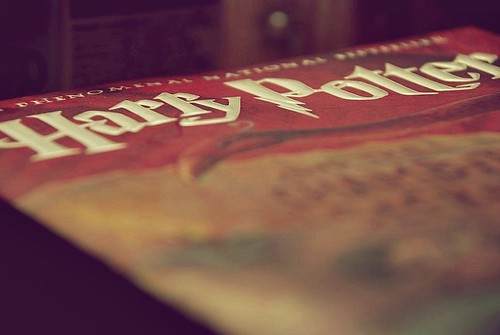Harry Potter and the Deathly Hallows (Part I)
/ The first part of Harry Potter and the Deathly Hallows opens with a bang as a wizard instructor, tortured and begging for her life drops to the table, surrounded by jeering Death Eaters as she’s killed by the story’s main protagonist, Lord Voldemort. This sets the tone for the best Harry Potter film to date, one that is both a superb adaptation of the novel that it’s based upon, and a solid film in and of itself.
The first part of Harry Potter and the Deathly Hallows opens with a bang as a wizard instructor, tortured and begging for her life drops to the table, surrounded by jeering Death Eaters as she’s killed by the story’s main protagonist, Lord Voldemort. This sets the tone for the best Harry Potter film to date, one that is both a superb adaptation of the novel that it’s based upon, and a solid film in and of itself.
Starting with the books, I’ve long found the film adaptations of each to be lacking when comparing one another. The first and second films get the story across in a decent manner, but miss out on the real essence, look and feel of the novels. The third one had an exceptional look and feel, capturing the story in a condensed manner, while four and five likewise got elements of the tone, but not the story across to audiences. Generally, storylines were dropped or hinted at, while scenes that showed off the skills of the computer programmers filled in for unnecessary moments. Coming out of The Deathly Hallows, I found that I really couldn’t criticize the film for the few elements that they had dropped.
If time is the key element here, the move to split the book into two separate films is proof positive that the penultimate film uses its time well: the story, themes and characters are on screen, almost perfectly making the transition over. The final novel of the series is itself a superior read because of the depth and ground covered in the story: as Lord Voldemort rises, the Ministry of Magic topples as it’s infiltrated. More than just a fantasy novel, J.K. Rowling uses her time well to create a fantastical dystopian fiction, while the film enhances much of what she wrote by background visuals: guards at the Ministry are dressed in black, with red arm bands while wizards in the ministry work to root out undesirables in a fashion reminiscent of Nazi Germany in the 1930s. This is underscored by the puppet Minister of Magic stating in the early parts of the film: ”If you have nothing to hide, you have nothing to fear”. It’s dark territory to go to, and the film tackles it well.
In a way, this film should be one of the more dull entries in the Potter franchise. Much like the first book, it’s set away from Hogwarts, focusing intensely on Harry Potter, Hermione Granger and Ron Weasley as they escape from Voldemort’s forces in the Ministry and vigilante bands wandering the countryside. As a juxtaposition from the dystopian feel, the film also incorporates a number of vaguely post-apocalyptic scenes as they travel across burned out villages, abandoned fields and structures in a number of hauntingly beautiful scenes while searching for the remaining horcruxes. The film maintains a sense of urgency throughout the two diverse elements, from their raid on the ministry to their escape across England, and director David Yates demonstrates a mastery behind the camera for everything that’s on the screen: the action scenes caught my breath in my throat, and even though I’ve recently read the book, I found myself at the edge of my seat with anticipation for what comes next.
At the heart of the entire film is the three characters that we’ve grown to love since the first books and films came out so long ago. Watching Harry Potter and the Sorcerer’s Stone for the first time in years recently, I marveled at how young the entire cast looked, and how they have changed. This film serves as an intense character moment for the trio as they embark on their last adventure against the world’s darkest threat. Tempers flare, moods turn to despair and emotions deepen as they wander. I’ve often wondered if Rowling was somewhat reluctant to let the characters go at points, but returning to the source, I’ve realized that the vast change in tone and style for this last story was one of necessity, one that required the time to uncover things at a natural pace. It suites me just fine, and where the book served as the perfect coda for the series, this film does as well, before the last decent into what will ultimately be a packed and exciting conclusion with the second part this July. Where the first half of the book is a bit sedentary, the second half is the direct opposite, with an intense finale that both ties together numerous sections of the story together and leaves it with a satisfying conclusion.
After watching the first part of the last film, the last film is already set up to a stellar ending, and I hope that it will live up to the excellence of its first half. Part 1 has set an incredibly high bar, but this was the easier part to adapt, and the next installment has a lot of material to take in. For this outing, however, it's as perfect an adaptation as could be expected, and a fitting take on Rowling's fantastic story.


